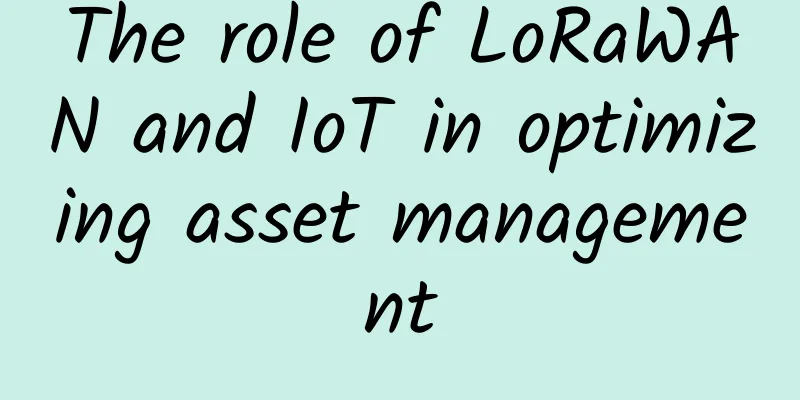The role of LoRaWAN and IoT in optimizing asset management

|
The role of the Internet of Things (IoT) and LoRaWAN in asset management is truly limitless. This is proven by the results that asset tracking IoT solutions can bring to manufacturing companies and other businesses. By reducing the non-operational time of assets, businesses can improve their bottom line. Asset management experts now play a vital role in maintaining adequate asset uptime. They are responsible for tracking the location of assets, maintenance history, asset optimization, smart financial decisions, business processes, and other important data. This information is used to optimize the utilization of assets and prevent downtime. With asset tracking IoT devices, this is easier, requires less manpower, can improve operational efficiency, and reduce operating costs. Advantages of LoRaWAN NetworksLoRaWAN can be used to monitor environmental conditions in inventory. For example, businesses can use IoT-enabled asset management sensors to track temperature, humidity, and air quality. This information can be used to improve the efficiency of HVAC systems and prevent equipment failures or adjust conditions to best suit asset health.
LoRaWAN asset management solutions can improve asset performance and uptime, reduce associated operating costs, while strengthening asset value preservation. Asset tracking software helps asset managers proactively collect data analytics to enhance monitoring and maintenance of their IoT-enabled assets, translating into higher productivity and profits. LoRaWAN asset management also enables asset managers to analyze data from physical assets and use it to make decisions about their business model. Since these analytical tools reduce operating costs, they are a good investment for businesses. Advantages of IoT-based asset tracking#1: Reduce operating costsCompanies can use IoT management systems to improve their manufacturing supply chains. With this asset lifecycle management technology, businesses can track individual items and optimize equipment efficiency. With information about asset status, asset details, the existing location of items, overall equipment efficiency, and possible asset failures, managers can optimize production, reduce waste, improve productivity, and increase revenue. For example, automated warehouse inventory systems can use predictive analytics to prevent the risk of stock-outs. IoT asset tracking systems reduce overall maintenance costs. Asset tracking IoT platforms can also improve worker safety and satisfaction, thereby saving on insurance premiums. Moreover, it provides actionable insights to improve processes. With real-time data, these manufacturers can maximize their technology ROI and establish appropriate regulatory frameworks. That’s why IoT sensors attached to assets are perfect for asset managers to ultimately improve operational efficiency and establish automated tracking. #2: Improve VisibilityBy leveraging an IoT-based asset management central monitoring system, companies can monitor equipment performance and equipment efficiency at all times. By analyzing this data, operators can improve maintenance schedules and identify problem areas before they occur and affect manufacturing units. In addition to this, IoT-based asset tracking provides real-time visibility for managing assets. By tracking asset performance, maintenance managers can accurately identify critical areas for repairs and calibrations and create asset tracking plans. In addition, IoT also enables effective asset management. With the help of IoT solutions, managers can also identify areas of improvement in their operational cycle times. #3: Improved WorkflowIoT can automate the inventory and transfer of assets in the supply chain. The technology helps prevent human errors and allows you to improve asset management without the need for additional labor. With connected devices, you will be able to measure risks and predict maintenance needs. With the right IoT-based asset management, you can also avoid significant losses due to lost assets. The system is also able to measure the condition of assets and assess them. IoT can also help improve employee happiness. A team that feels well-supported is less likely to get stressed out by managing small details. For example, smart GPS units can be used to monitor fleet vehicles and schedule maintenance, reducing human error while giving workers time to check on more important issues. Another example of how IoT asset optimization technology can improve asset management workflows is by automatically monitoring underutilized assets. Without automation, managers have to manually check asset lifecycles all the time. This can be expensive and time-consuming, and an IoT-enabled asset management system will streamline these tasks. Your staff can focus on higher-value assets, and IoT can help you save time and money. Managing and maintaining assets is a complex and time-consuming process. IoT technology is helping to make this task more efficient, as IoT devices can quickly generate data that can be sent to Excel spreadsheets or AI analytics programs. IoT sensors track the condition of all assets, including valuable assets or regulated assets. IoT-based asset management solutions enable preventive maintenance and comprehensive asset visibility, which can increase productivity and profits while reducing costs. Asset Management Solutions: Key ConsiderationsBefore implementing an IoT-enabled asset management solution such as LoRaWAN, there are some key things to consider:
By considering these factors before implementing an IoT-enabled asset management solution, you can ensure it fits your specific needs and is a success. Traditional asset management solutions don’t make the tracking process any easier. The problem is that they don’t track assets in real time and accuracy is poor. IoT asset management uses embedded sensors to monitor assets in real time and delivers complete information directly to their mobile devices. Using IoT technology in asset management combines data with intelligence, allowing companies to streamline processes and eliminate theft and theft. Securing the Internet of ThingsThe Internet of Things has become an increasingly popular asset management technology, and while it is a valuable tool, it also presents some security risks. Unsecured devices, known as shadow devices, are vulnerable to cyberattacks because they have no authentication or authorization. Shadow devices are also susceptible to malware infection and being part of botnets. Here’s why you only need to buy smart devices from trusted vendors:
Improve efficiencyAsset management solutions can help improve the efficiency of any business or organization. By tracking assets, businesses can ensure they always know their whereabouts and can take action if they are lost or stolen. Additionally, by using IoT sensors and applications, businesses can better track inventory levels and monitor the movement of assets within the facility. This helps improve overall efficiency and reduce costs. One of the biggest benefits of IoT asset management is that it eliminates human intervention and allows the system to automatically transmit data. It can also alert maintenance technicians to repair equipment that requires urgent attention. In addition, the system can also send work orders to field engineers to inspect and repair the machine, thereby reducing downtime. In addition, the system will allow asset managers to reduce costs and increase productivity by eliminating manual processes. |
<<: Will an Ethernet splitter reduce my internet speed?
>>: Application of multimodal algorithms in video understanding
Recommend
Which cloud SMS service is better? Borui Data released a cloud SMS evaluation report
Introduction Beijing Borui Hongyuan Data Technolo...
Six wireless transmission modes, do you know them all?
In order to set up the relay function of the wire...
RAKsmart adds Hong Kong large bandwidth and 20% discount promotion, US/Hong Kong/Japan cluster server 258 IP
RAKsmart has added a new Hong Kong high-bandwidth...
HostXen offers a 50 RMB bonus for every 300 RMB you spend during Double 11, and a 150 RMB bonus for every 600 RMB you spend. 2G packages for Japan/Hong Kong start from 70 RMB, and new customers will receive coupons
HostXen's Double 11 event actually started on...
IPv6 brings huge opportunities for managed service providers
For MSPs, helping customers transition to IPv6 co...
The acceleration of 5G NR standardization will have a significant impact on operator plans
Ovum said that the recent decision by 3GPP to acc...
See all the things a service mesh can do
Service mesh adoption continues to grow, and some...
Qualcomm demonstrates 5G new air interface connection based on 3GPP for the first time, which is expected to become a global standard
At the "2017 Qualcomm 5G Summit" held r...
What are the main measures and methods to deal with data center downtime?
While data centers are designed to not fail in th...
How much does data center downtime cost?
Data center downtime is unbearable for any enterp...
Hostodo: $17.99/year KVM-1GB/12GB/4TB/Las Vegas
Hostodo is a foreign VPS hosting company founded ...
DiyVM: 50% off VPS in the US/Japan/Hong Kong, 2G memory package for 50 yuan per month
DiyVM is an early Chinese hosting company, founde...
Inventory: Three basic elements and five characteristics of the Industrial Internet
Three basic elements of the Industrial Internet S...
Cisco CEO: 5G will bring unexpected benefits to Cisco
[[278077]] Cisco is primarily known for its switc...
V5.NET: 30% off for first order from new customers, Hong Kong E5 server as low as HK$385/month
V5.NET is a business that provides independent se...









